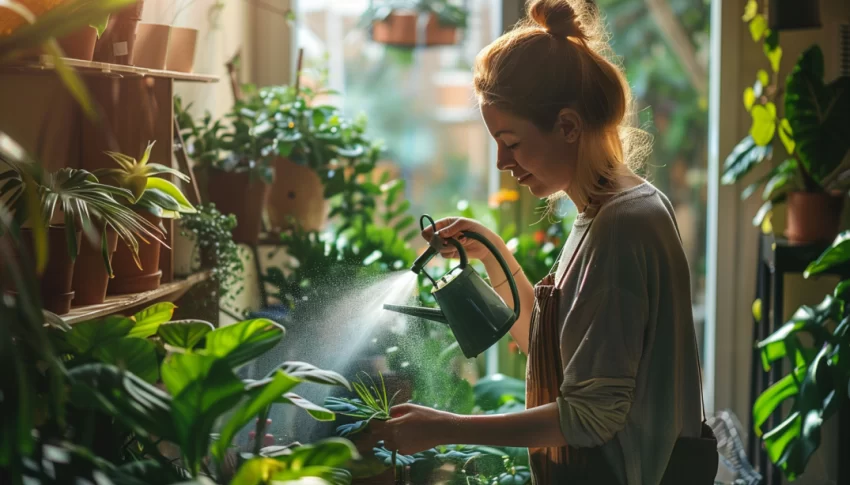Houseplants have become increasingly popular in recent years, and for good reason. Not only do they add a touch of greenery to any living space, but they also offer a range of health benefits, such as improving air quality and reducing stress levels.
However, with so many different types of houseplants available, it can be overwhelming to choose the perfect houseplant match for your lifestyle.
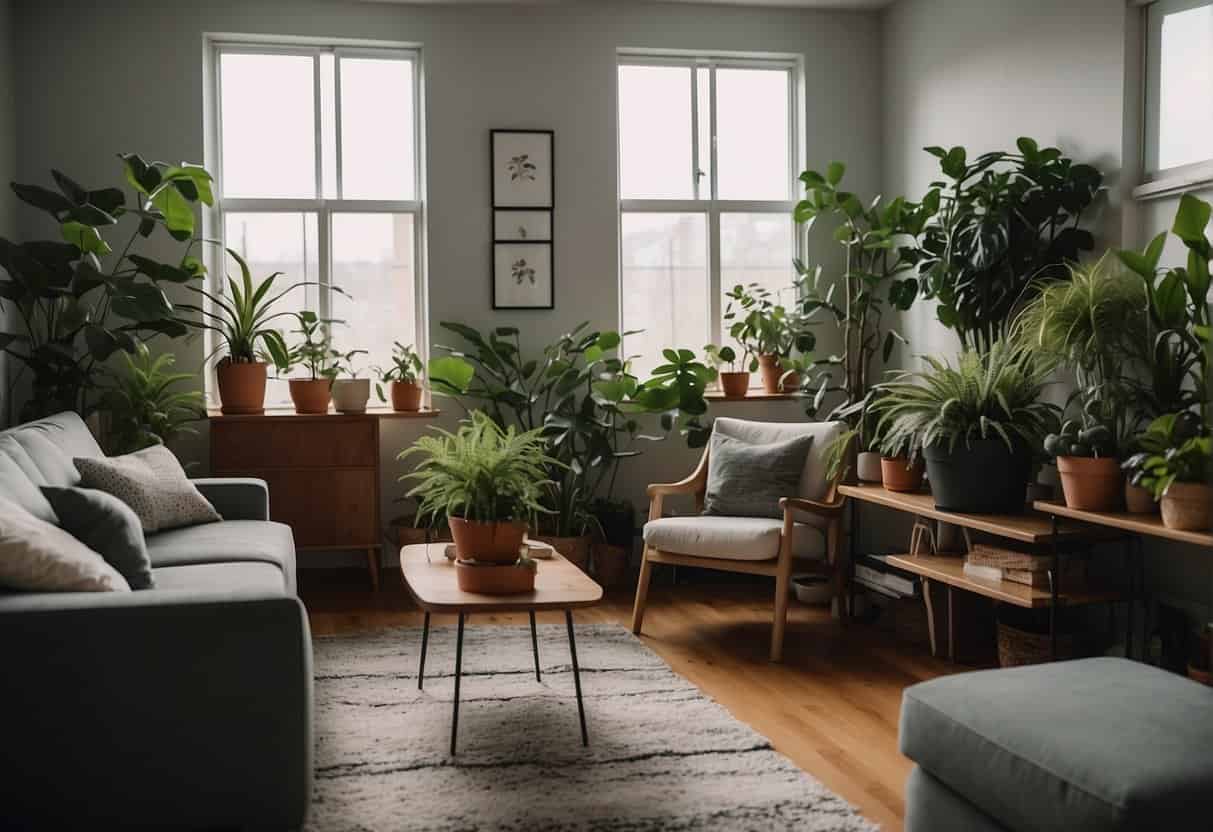
The good news is that there are houseplants to suit every lifestyle, whether you’re a busy professional with little time to spare or a stay-at-home parent with young children.
By taking into consideration factors such as lighting, watering needs, and maintenance requirements, it’s possible to find a houseplant that fits seamlessly into your daily routine.
In this article, we’ll explore some of the best houseplant recommendations based on different lifestyles so you can find the perfect plant for your home.
Determining the Right Houseplants for Your Lifestyle
When it comes to finding your houseplant match, it’s important to choose ones that will thrive in your living space and fit your lifestyle. Here are some factors to consider when determining the right houseplants for your lifestyle.
Assessing Your Living Space and Light Availability
Before choosing a houseplant, make sure to assess your living space and lighting conditions.
Some plants require more natural light than others, so it’s important to choose a plant that will thrive in your space.
If you have a room with low lighting conditions, consider plants that do well in low light, such as snake plants or ZZ plants.
On the other hand, if you have a room with bright, natural light, consider plants that thrive in those conditions, such as succulents or spider plants.
Understanding Your Time and Commitment
Another important factor to consider when selecting houseplants is your time and commitment.
If you have a busy schedule or travel frequently, it’s best to choose low-maintenance plants that require minimal care.
Some examples of low-maintenance plants include pothos, snake plants, and ZZ plants. These plants can survive with infrequent watering and do not require a lot of attention.
Considering Pets and Plant Safety

If you have pets, it’s important to choose plants that are safe for them.
Some plants can be toxic to pets, so make sure to research which plants are safe and which ones to avoid.
Some pet-friendly plants include spider plants, Boston ferns, and African violets. Additionally, make sure to keep plants out of reach of pets to prevent them from accidentally ingesting any toxic parts.
Health Benefits of Houseplants
Houseplants are not only beautiful to look at, but they also provide numerous health benefits. In this section, we will discuss some of the most significant health benefits of houseplants.
Improving Indoor Air Quality
One of the most well-known benefits of houseplants is their ability to improve indoor air quality.
Indoor air pollution can be caused by a variety of factors, including volatile organic compounds (VOCs) from cleaning products and furniture, as well as ozone from electronic devices.
Houseplants can help remove these pollutants from the air through a process called photosynthesis.
According to a study by NASA, some of the best houseplants for improving indoor air quality include spider plants, peace lilies, and Boston ferns. These plants effectively remove pollutants such as benzene, formaldehyde, and trichloroethylene from the air.
Enhancing Mental and Physical Health
In addition to improving indoor air quality, houseplants can also enhance mental and physical health.
Research has shown that being around plants can reduce stress, anxiety, and depression. One study found that patients in hospital rooms with plants had lower blood pressure and heart rate than those without plants.
Houseplants can also improve cognitive function and overall well-being. A study by the University of Michigan found that being around nature, including indoor plants, can improve memory performance and attention span.
Popular Houseplants for Various Needs
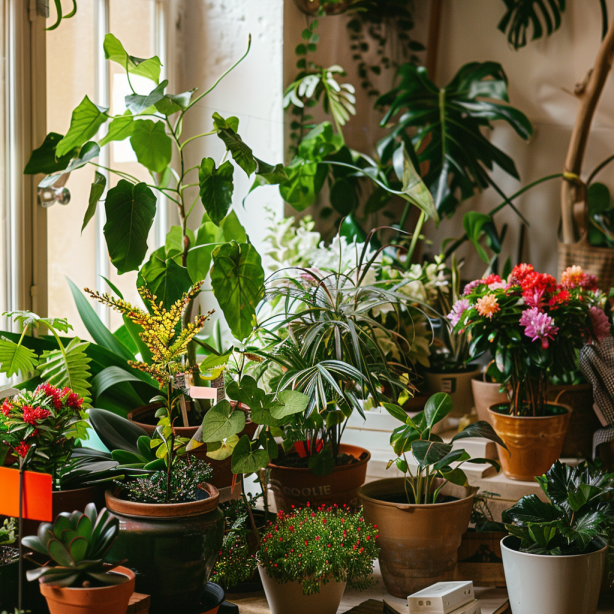
If you are a beginner in the world of houseplants, it can be overwhelming to decide which one to bring home. Here are some of the best houseplants for beginners:
Best Houseplants for Beginners
- Snake Plant: This plant is nearly indestructible and can tolerate low light and infrequent watering. It is also known for purifying the air, making it a great addition to any home.
- Golden Pothos: This plant is easy to care for and grows quickly. It can tolerate low light and can be trained to climb a trellis or moss pole.
- ZZ Plant: This plant is known for its ability to thrive in low light and can tolerate infrequent watering. It has glossy leaves and a unique shape that adds character to any room.
For those who want to enjoy the beauty of houseplants without the hassle of frequent maintenance, here are some top low-maintenance plants:
Top Low-Maintenance Plants
- English Ivy: This plant is a classic and can be grown in a hanging basket or trained to climb a trellis. It can tolerate low light and infrequent watering.
- Spider Plant: This plant is known for its ability to remove harmful toxins from the air. It can tolerate low light and infrequent watering, making it a great choice for those who want a low-maintenance plant that also improves air quality.
- Boston Fern: This plant is a great choice for those who want a lush, green plant that requires minimal care. It prefers bright, indirect light and needs to be watered regularly, but not too much.
If you are looking for houseplants that can help improve air quality, here are some great options:
Plants for Improving Air Quality
- Rubber Plant: This plant is known for its ability to remove toxins from the air, making it a great choice for those who want to improve indoor air quality. It prefers bright, indirect light and needs to be watered regularly.
- Peace Lily: This plant is easy to care for and produces beautiful white flowers. It is also known for its ability to remove harmful toxins from the air.
- Spider Plant: As mentioned earlier, this plant is great for improving air quality. It is also easy to care for and can tolerate low light and infrequent watering.
Specific Care Guidelines for Houseplants
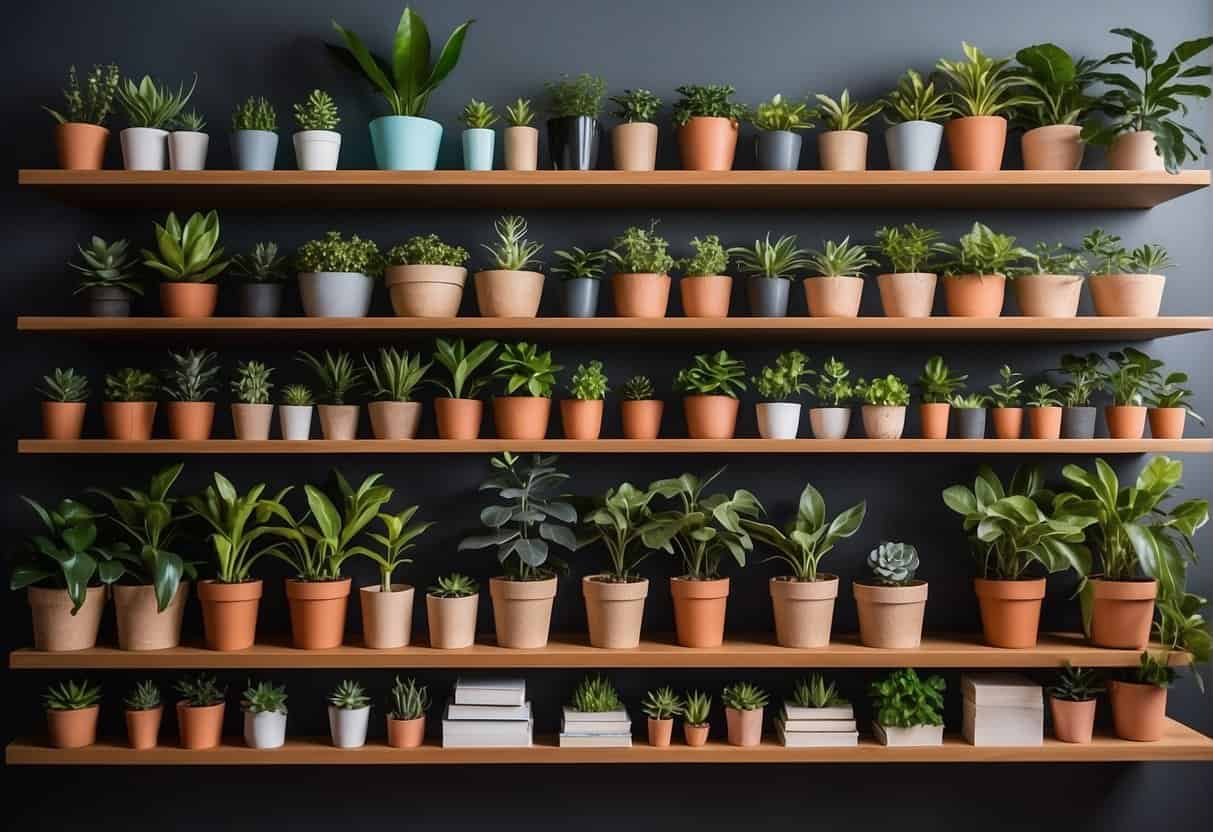
Taking care of houseplants can be a rewarding experience, but it can also be challenging, especially if you are new to gardening. Each plant has its unique needs, and it is essential to understand the specific care guidelines for your houseplants to ensure their health and longevity.
Watering and Moisture Levels
Watering is one of the most crucial aspects of houseplant care. Overwatering or underwatering can lead to root rot or dehydration, respectively, which can be fatal to your plants.
Knowing how much water your plants need and how often to water them is essential.
For succulents, it is crucial to let the soil dry out completely before watering them again. On the other hand, ferns and ficus plants require consistently moist soil, and it is best to keep the soil slightly damp at all times.
It is also important to note that the humidity levels in your home can affect the moisture levels of your plants. Placing a tray of water near your plants or using a humidifier can help maintain the appropriate humidity levels.
Dealing with Light and Placement
Light is another essential factor in houseplant care. Different plants have different light requirements, and it is crucial to place them in the right location to ensure their health.
For instance, succulents and cacti prefer bright, direct sunlight, while ferns and snake plants thrive in low to medium-light environments.
It is also important to consider the placement of your plants in every room.
For example, plants in the kitchen may require more frequent watering due to the increased humidity and temperature from cooking. In contrast, plants in the bedroom may require less water and light.
Fertilization and Soil Health
Fertilization and soil health are also crucial factors in houseplant care.
It is essential to use the right type of fertilizer and to fertilize your plants at the appropriate time. Overfertilizing can lead to nutrient burn, which can be harmful to your plants.
It is also important to repot your plants when necessary to ensure that they have enough space to grow and thrive.
When repotting, make sure to use the right type of soil, as different plants require different soil types.
For instance, succulents and cacti require well-draining soil, while ferns and ficus plants require soil that retains moisture.
Advanced Houseplant Topics
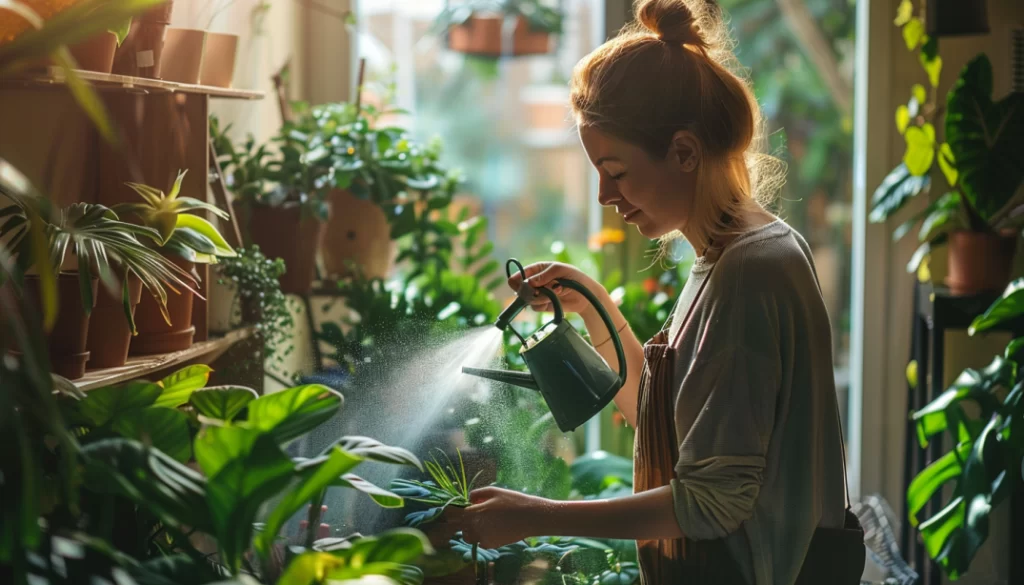
Propagation and Growth
For those looking to expand their collection of houseplants, propagation can be a rewarding and cost-effective way to do so. Different plants have different propagation methods, but some popular options include stem cuttings, leaf cuttings, and division.
For example, the Ficus elastica, or rubber tree, can be propagated by stem cuttings placed in water or soil.
When it comes to growth, it is important to consider the plant’s natural habits and adjust care accordingly. The Epipremnum aureum, or golden pothos, is a fast grower that benefits from regular pruning to maintain its shape and size.
On the other hand, the Chlorophytum comosum, or spider plant, prefers to be slightly root-bound and may not need to be repotted as frequently as other plants.
Pest Prevention and Treatment
Pests can be a common issue for indoor plants, but there are natural ways to prevent and treat them. One preventative measure is to regularly inspect plants for signs of pests and remove any affected leaves or branches.
For example, spider mites can be deterred by misting plants with water or a mixture of water and neem oil.
If pests do become a problem, there are natural treatment options available. For instance, a solution of water and dish soap can be used to control mealybugs.
It is important to note that different pests may require different treatments, so it is recommended to research specific solutions for each type of pest.
Seasonal Care and Adjustments
As with outdoor gardening, indoor plants require seasonal care and adjustments. Light levels may change throughout the year, requiring plants to be moved to different locations to ensure they receive adequate light.
For example, the Dracaena, a popular houseplant with many species, generally prefers bright, indirect light but may need to be moved to a shadier location during the summer months to avoid direct sunlight.
In addition to light, seasonal changes may also affect watering needs. During the winter months, indoor heating can dry out the air, so you may need to increase humidity levels around plants.
This can be done by placing a water tray near the plant or misting the leaves with water.
Houseplant Selection by Room
When it comes to selecting houseplants for your home, it’s essential to consider the specific needs of each room. Different rooms have different levels of natural light, humidity, and temperature, and choosing the perfect plant for each room can help ensure that your plants thrive.
Kitchen and Bathroom Varieties
Kitchens and bathrooms are typically high-moisture environments, making them ideal for plants that thrive in humid conditions. Some great options for these rooms include:
- Spider Plants: These plants are perfect for the kitchen or bathroom, as they thrive in high humidity and can tolerate low light levels. They are also known for their air-purifying qualities, which can help keep your home fresh and clean.
- Bamboo: Bamboo is another great choice for high-moisture environments, as it can tolerate wet conditions and doesn’t require much light. Plus, it adds a touch of natural beauty to any space.
- Aloe Vera: Aloe vera is a hardy plant that thrives in warm, humid conditions. It’s also great for the kitchen or bathroom, as it can help soothe burns and other minor skin irritations.

Living Room and Bedroom Choices
Living rooms and bedrooms tend to have lower humidity levels and varying levels of natural light. Here are some houseplants that can thrive in these environments:
- Snake Plants: Snake plants are a popular choice for any room in the house, but they are particularly well-suited for the living room or bedroom. They can tolerate low light levels and don’t require much water, making them perfect for busy homeowners.
- Rubber Plants: Rubber plants are another great option for the living room or bedroom, as they can tolerate low light and fluctuating temperatures. They are also known for their air-purifying qualities, which can help keep your home fresh and clean.
- Peace Lilies: Peace lilies are a popular choice for bedrooms, as they can help improve air quality and promote relaxation. They prefer bright, indirect light and moist soil, making them a great choice for bedrooms with large windows.
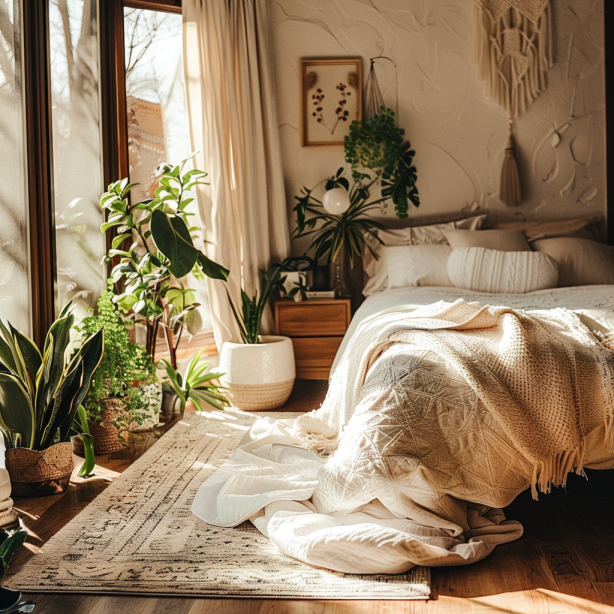
The Science Behind Houseplants
Houseplants are not only aesthetically pleasing, but they also have numerous benefits for indoor environments. Understanding the science behind houseplants can help individuals make informed decisions when selecting plants for their homes.
Photosynthesis and Plant Respiration
Photosynthesis is the process by which plants convert light energy into chemical energy, which is stored in the form of sugars. During photosynthesis, plants absorb carbon dioxide (CO2) from the air and release oxygen (O2) into the atmosphere.
This process helps to purify the air by removing CO2 and releasing O2.
Plant respiration is the opposite of photosynthesis. During respiration, plants absorb O2 and release CO2. However, the amount of O2 released during photosynthesis is greater than the amount of O2 consumed during respiration, resulting in a net increase in O2 and a net decrease in CO2.
NASA Study on Houseplants and Air Purification
In the 1980s, NASA conducted a study on the ability of houseplants to purify the air. The study found that certain plants are effective at removing harmful chemicals such as benzene, formaldehyde, xylene, and toluene from the air.
These chemicals are commonly found in indoor environments and can have negative health effects.
Houseplants can also remove particulate matter from the air, which can cause respiratory problems. In addition, plants can remove volatile organic compounds (VOCs) from the air. VOCs are chemicals that can be emitted from common household items such as cleaning products, paints, and furniture.
Innovative Ways to Incorporate Houseplants
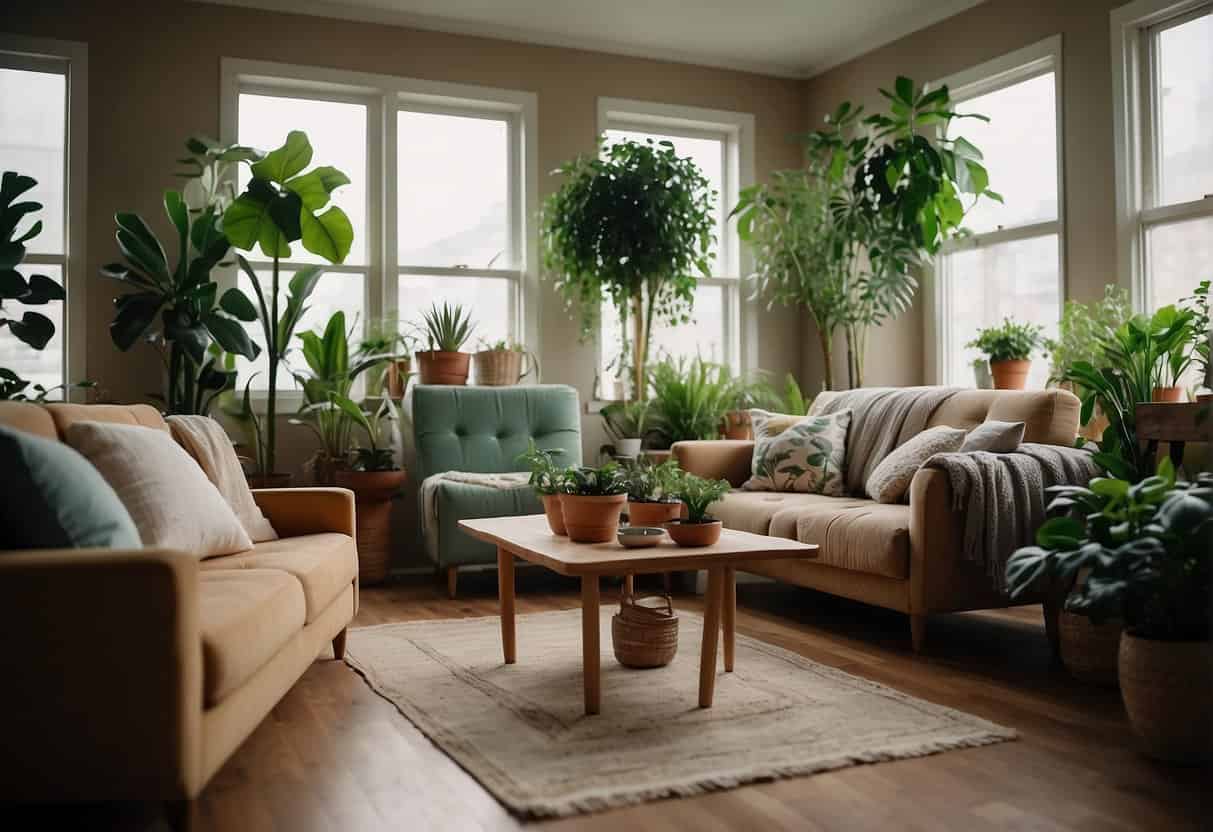
Houseplants are a great way to add greenery and life to any space, but there are also many creative ways to incorporate them into your home. Here are a few ideas:
DIY Planters and Creative Displays
One way to make your houseplants stand out is to create unique planters or displays for them. This can be as simple as painting a terra cotta pot or as complex as building a living wall.
Some DIY planter ideas include:
- Upcycling old containers, such as teapots or tin cans, into planters
- Creating a hanging planter using macrame or a repurposed basket
- Adding a pop of color to a plain pot with spray paint or decoupage
Creative displays can also make your houseplants a focal point in your home. Some ideas include:
- Grouping plants of different sizes and shapes together on a shelf or table
- Creating a terrarium with succulents or air plants
- Hanging plants from the ceiling to create a living curtain
Horticultural Therapy at Home
In addition to adding beauty to your home, houseplants can also provide therapeutic benefits. Horticultural therapy is a practice that uses plants and gardening to improve well-being.
Some benefits of horticultural therapy include:
- Reducing stress and anxiety
- Boosting mood and self-esteem
- Improving focus and concentration
You don’t need a green thumb or a lot of space to experience the benefits of horticultural therapy at home. Some ideas include:
- Creating a small herb garden on a windowsill
- Planting a few easy-to-care-for houseplants, such as spider plants or pothos
- Participating in a virtual gardening class or workshop
Houseplants and Lifestyle Integration
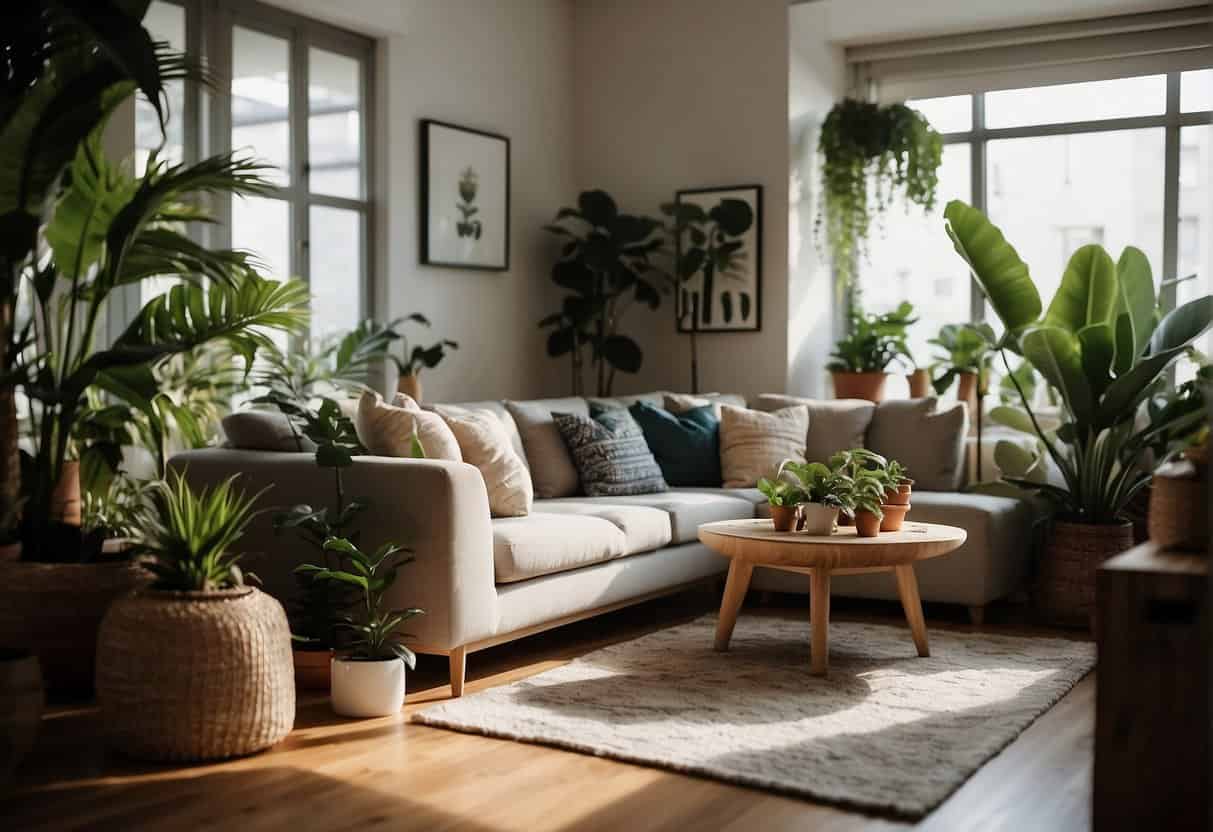
Integrating houseplants into your lifestyle can be a great way to improve your overall well-being. Whether you have an active lifestyle or work from home, there are many low-maintenance indoor plants that can help improve your productivity and cognition.
Plants for Active Lifestyles
For those with an active lifestyle, it can be challenging to find plants that can thrive in a constantly changing environment. However, there are many indoor plants that require minimal care and can adapt to different light and temperature conditions.
Some of the best low-maintenance plants for active lifestyles include:
- Snake Plant: This plant is a great option for those who travel frequently or have irregular schedules. It can withstand low light conditions and only needs to be watered once every two to three weeks.
- ZZ Plant: The ZZ plant is another low-maintenance option that can survive in low light conditions. It only needs to be watered once a month and can tolerate a wide range of temperatures.
- Pothos: The Pothos plant is a great option for those who want to add some greenery to their space but don’t have a lot of time to care for their plants. It can thrive in low light and only needs to be watered once a week.
Houseplants for the Home Office
If you work from home, adding some indoor plants to your workspace can help improve your productivity and cognition. Studies have shown that indoor plants can help reduce stress and improve air quality, which can lead to increased focus and creativity.
Some of the best indoor plants for the home office include:
- Spider Plant: The Spider Plant is a great option for the home office because it can help purify the air and improve indoor air quality. It only needs to be watered once a week and can adapt to a wide range of light conditions.
- Peace Lily: The Peace Lily is another great option for the home office because it can help reduce stress and improve air quality. It only needs to be watered once a week and can thrive in low light conditions.
- Rubber Plant: The Rubber Plant is a low-maintenance option that can help improve air quality and add some greenery to your space. It only needs to be watered once a week and can tolerate low light conditions.
Conclusion
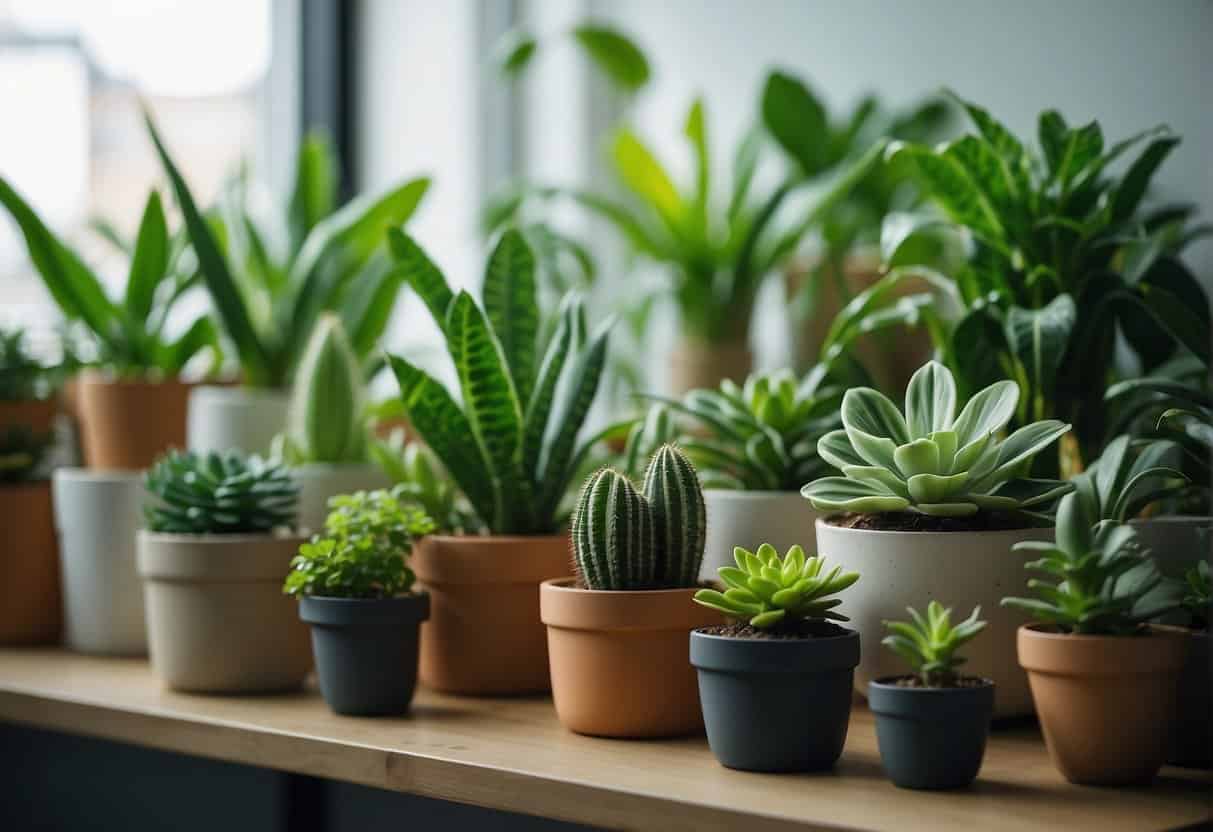
In conclusion, choosing the right houseplant for your lifestyle can be a fun and rewarding experience.
By considering factors such as your schedule, living space, and personal preferences, you can find a plant that not only adds beauty to your home but also fits seamlessly into your daily routine.
When it comes to selecting indoor plants, there are a variety of options available that can thrive in different environments.
For those with busy schedules, low-maintenance plants like snake plants or ZZ plants are great choices, as they require minimal watering and can tolerate low light conditions.
On the other hand, those who enjoy spending time caring for their plants may prefer more high-maintenance options like fiddle leaf figs or orchids.
It’s also important to consider the size of your living space when selecting a houseplant.
If you live in a small apartment or have limited floor space, compact plants like succulents or air plants can add a touch of greenery without taking up too much room.
For those with larger living spaces, larger plants like peace lilies or rubber trees can make a statement and fill empty corners.
Frequently Asked Questions
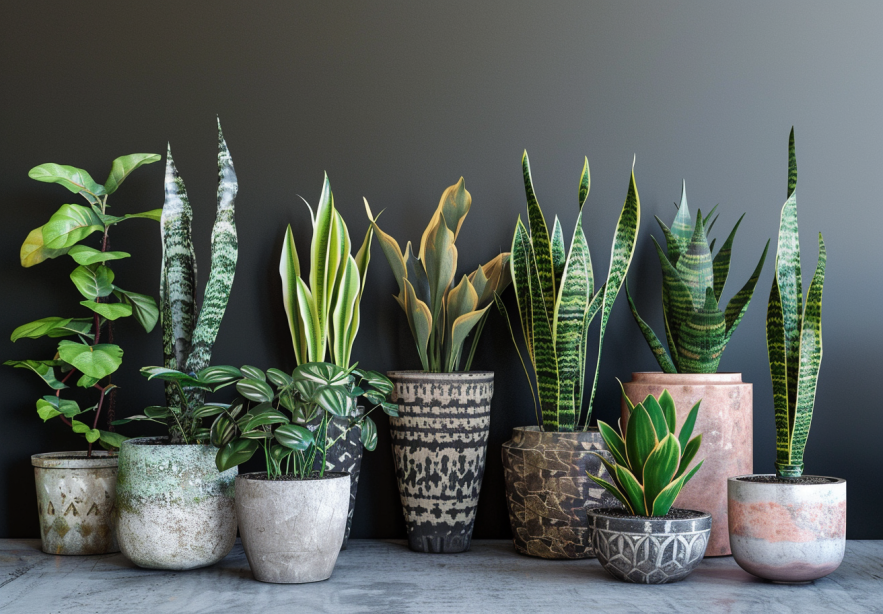
What are the best indoor plants to improve air quality?
Indoor plants are known to contribute to better air quality by removing harmful pollutants and toxins from the air. Some of the best indoor plants for this purpose include Spider Plant, Peace Lily, Snake Plant, and Boston Fern.
These plants are easy to care for and can thrive in a variety of indoor environments.
Which tall indoor plants are most suitable for home or office spaces?
Tall indoor plants are great for adding a touch of greenery and elegance to any space. Some of the most suitable tall indoor plants for home or office spaces include Fiddle Leaf Fig, Rubber Tree, and Yucca.
These plants are not only aesthetically pleasing but also easy to care for.
How can I select indoor plants that will thrive in my living environment?
Selecting indoor plants that will thrive in your living environment depends on several factors, including the amount of light, humidity, and temperature in your home.
It is important to choose plants that are well-suited to your specific living environment.
Some plants that can thrive in low-light environments include Snake Plants, ZZ Plants, and Philodendrons.
What are the top indoor plants known to contribute to mental well-being?
Indoor plants are known to have a positive impact on mental well-being by reducing stress and anxiety levels. Some of the top indoor plants known for their ability to contribute to mental well-being include Lavender, Aloe Vera, and Jasmine.
These plants have a calming effect and can help promote relaxation.
Which indoor plants are known for their ability to enhance oxygen levels in the home?
Indoor plants are known for their ability to enhance oxygen levels in the home. Some of the best indoor plants for this purpose include Areca Palm, Snake Plant, and Spider Plant.
These plants are great for improving air quality and can help promote better health.
What should I consider when looking for low-maintenance indoor plants for my living room?
When looking for low-maintenance indoor plants for your living room, make sure to consider factors such as the amount of natural light, humidity levels, and temperature.
Some of the best low-maintenance indoor plants include Snake Plant, ZZ Plant, and Pothos. These plants require minimal care and can thrive in a variety of indoor environments.


